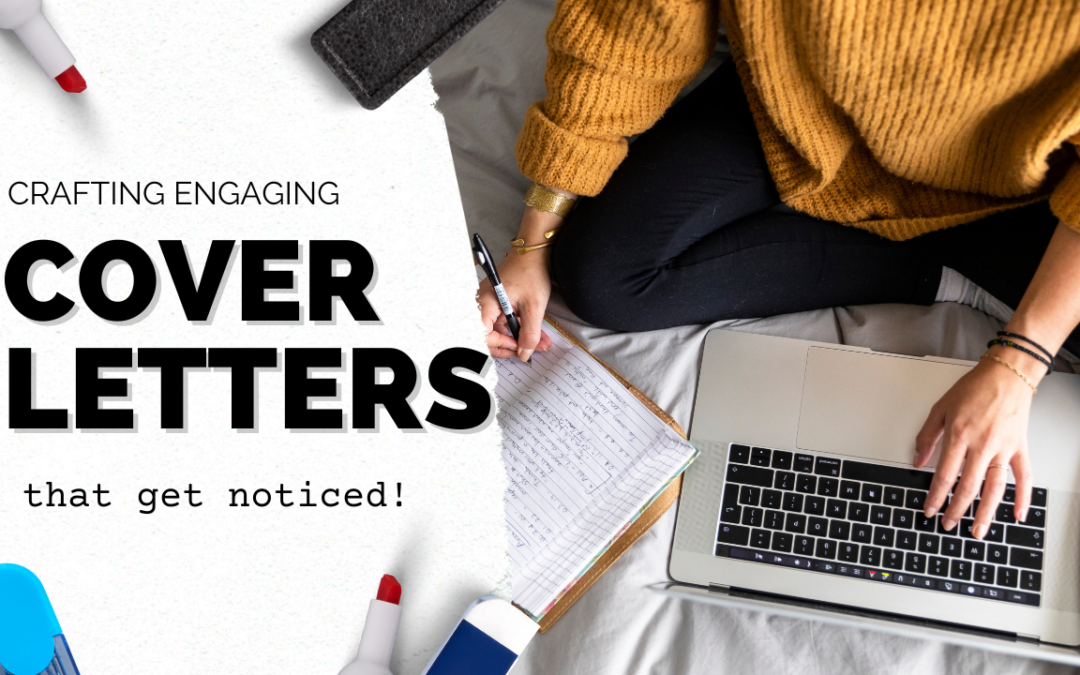In the competitive job market of today, a well-written cover letter can be your golden ticket to stand out from the crowd and capture the attention of potential employers. It’s your opportunity to make a strong first impression and showcase your enthusiasm, qualifications, and unique qualities that make you the perfect fit for the position. But how do you craft a cover letter that not only gets noticed but leaves a lasting impact? Let’s dive into the key elements of crafting engaging cover letters.
1. Research and Personalization
Before you start writing your cover letter, take the time to thoroughly research the company, its values, culture, and the specific job role you’re applying for. This research will enable you to tailor your cover letter to the company’s needs and demonstrate your genuine interest in the organization.
Address the hiring manager by name whenever possible, as this adds a personal touch and shows that you’ve done your homework. Avoid generic salutations like “To Whom It May Concern” as they can come across as impersonal and lackluster.
2. Strong Opening
The first few sentences of your cover letter are crucial. Grab the reader’s attention with a compelling opening that highlights your enthusiasm for the position or the company. You could start with a relevant anecdote, a thought-provoking question, or a bold statement that showcases your passion and expertise.
3. Showcase Achievements and Skills
Rather than rehashing your resume, use the cover letter to highlight specific achievements and skills that demonstrate your qualifications for the job. Provide concrete examples of how you’ve excelled in previous roles and how those experiences make you a valuable asset for the company.
Quantify your achievements whenever possible. Numbers and metrics can make your accomplishments more tangible and impressive. For instance, instead of saying, “I improved sales,” you could say, “I increased sales by 25% within the first quarter.”

4. Align with the Job Description
A strong cover letter showcases how your skills and experiences align with the requirements outlined in the job description. Go through the job posting carefully and identify the key qualifications and responsibilities. Then, explain how your background directly matches those requirements.
Use keywords from the job description, but don’t overdo it – your cover letter should read naturally, not like a keyword-stuffed document.
5. Express Enthusiasm and Cultural Fit
Employers value candidates who are not only qualified but also excited about the company’s mission and values. Express your enthusiasm for the company and explain why you believe you’re a perfect cultural fit. This demonstrates that you’ve done your research and genuinely want to contribute to the organization’s success.
6. Address Potential Concerns
If you have any gaps in your employment history or if you’re switching industries, the cover letter is the place to address these potential concerns. Use a positive tone to explain the reasons behind these changes and emphasize the transferable skills that make you a strong candidate despite any challenges.
7. Tailor Each Cover Letter
Avoid sending out generic cover letters for multiple job applications. While it might be more time-consuming, tailoring each cover letter to the specific role you’re applying for can greatly increase your chances of getting noticed. Customizing your letter shows that you’re genuinely interested in that particular position and willing to put in the effort.
8. Professional Closing
In your closing paragraph, reiterate your excitement for the opportunity, express gratitude for considering your application, and invite the reader to contact you for further discussion. Sign off with a professional closing, such as “Sincerely” or “Best regards,” followed by your name.

9. Proofread and Format Carefully
A well-written cover letter can be marred by typos and grammatical errors. Proofread your letter meticulously to ensure it’s error-free. Also, pay attention to formatting – use a clean and professional font, maintain consistent spacing, and ensure that your cover letter is visually appealing and easy to read.
10. Keep it Concise
While you want to include relevant details, remember that a cover letter is not a substitute for your resume. Aim for a concise letter that captures the most important information and maintains the reader’s interest. A one-page cover letter is generally sufficient to convey your qualifications and enthusiasm.
In conclusion, crafting an engaging cover letter requires a combination of research, personalization, and effective communication. By showcasing your qualifications, aligning with the job description, and demonstrating enthusiasm, you can create a cover letter that not only gets noticed but also sets you apart as a standout candidate. Remember, your cover letter is your chance to make a memorable first impression – make it count!

